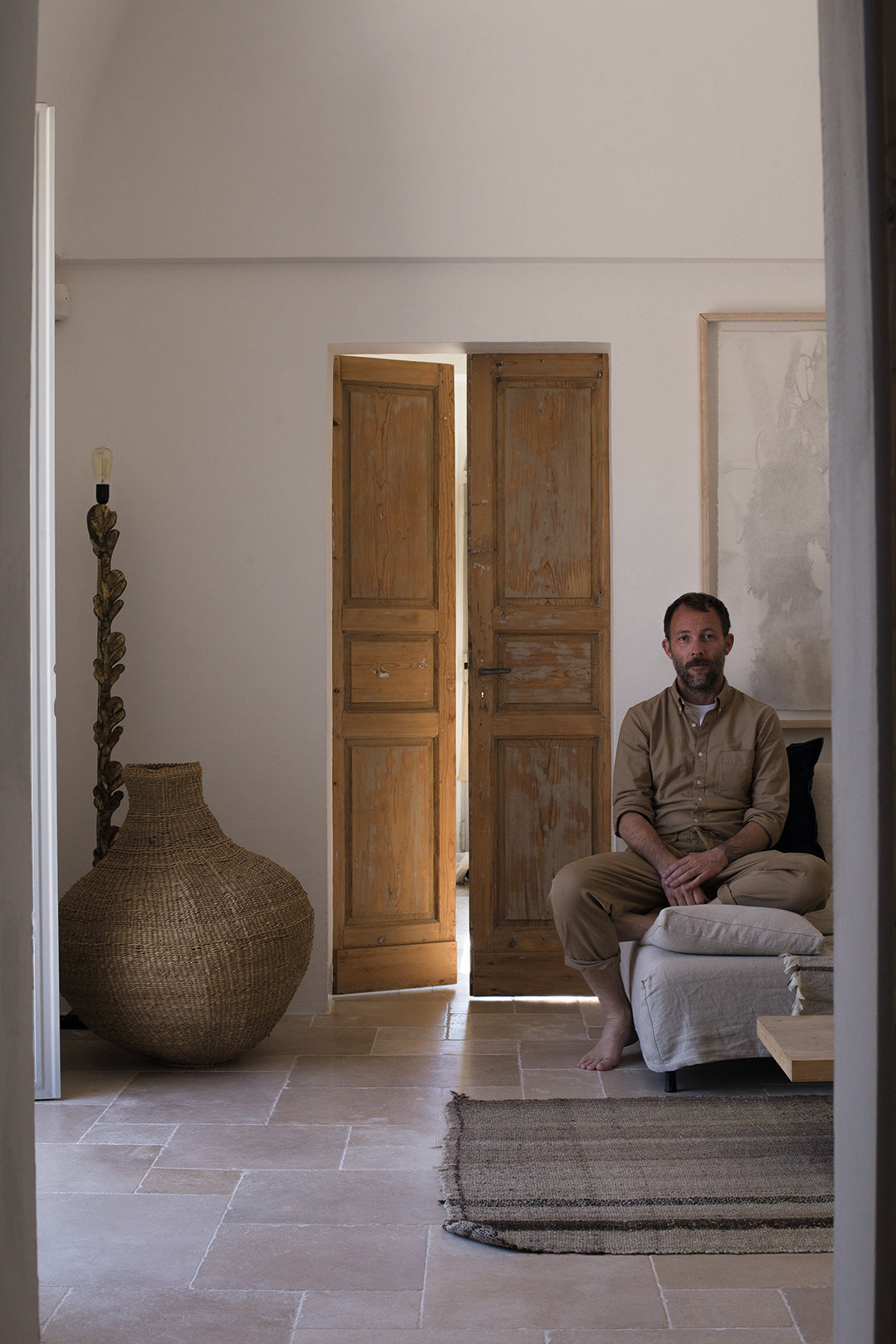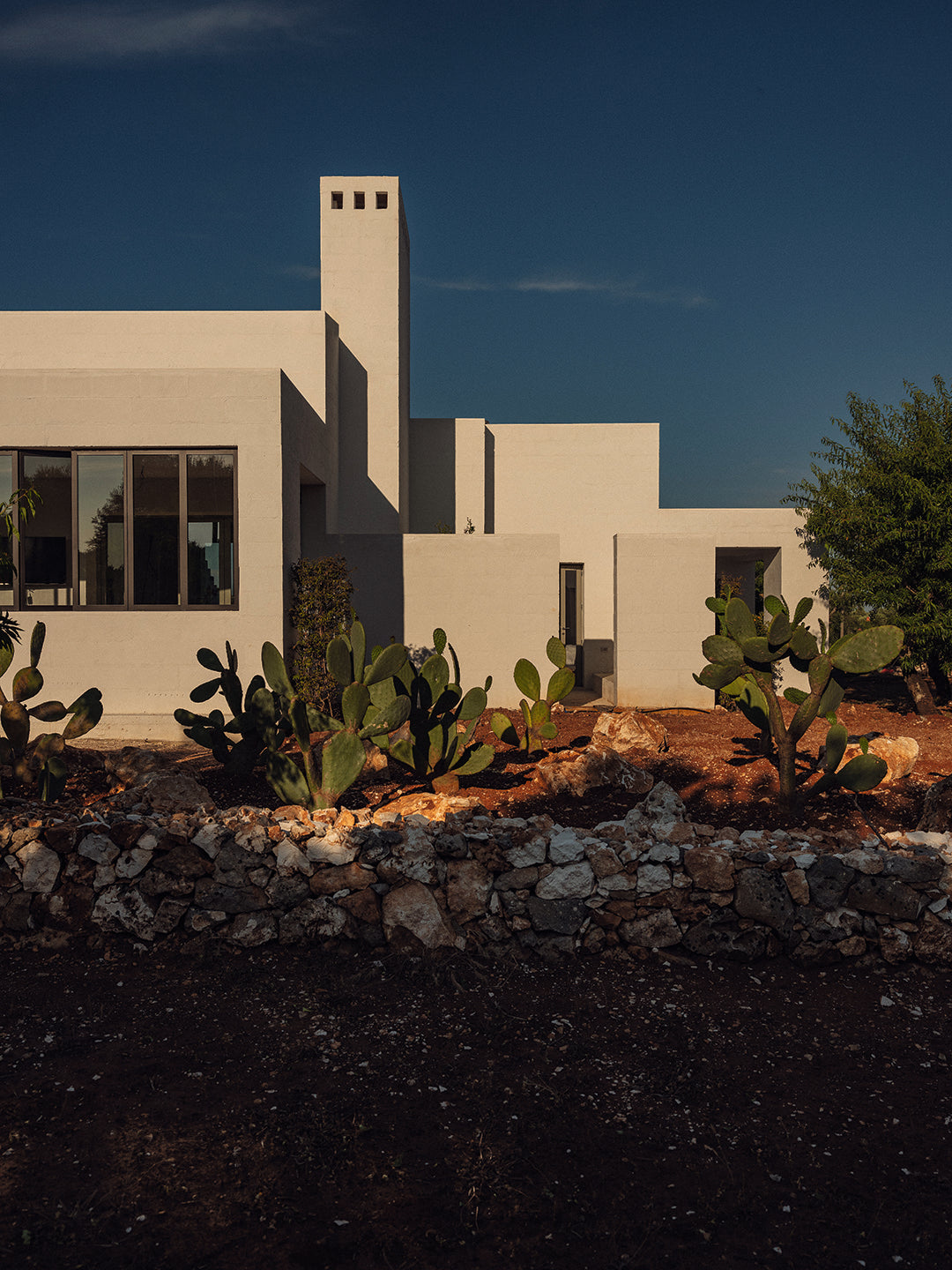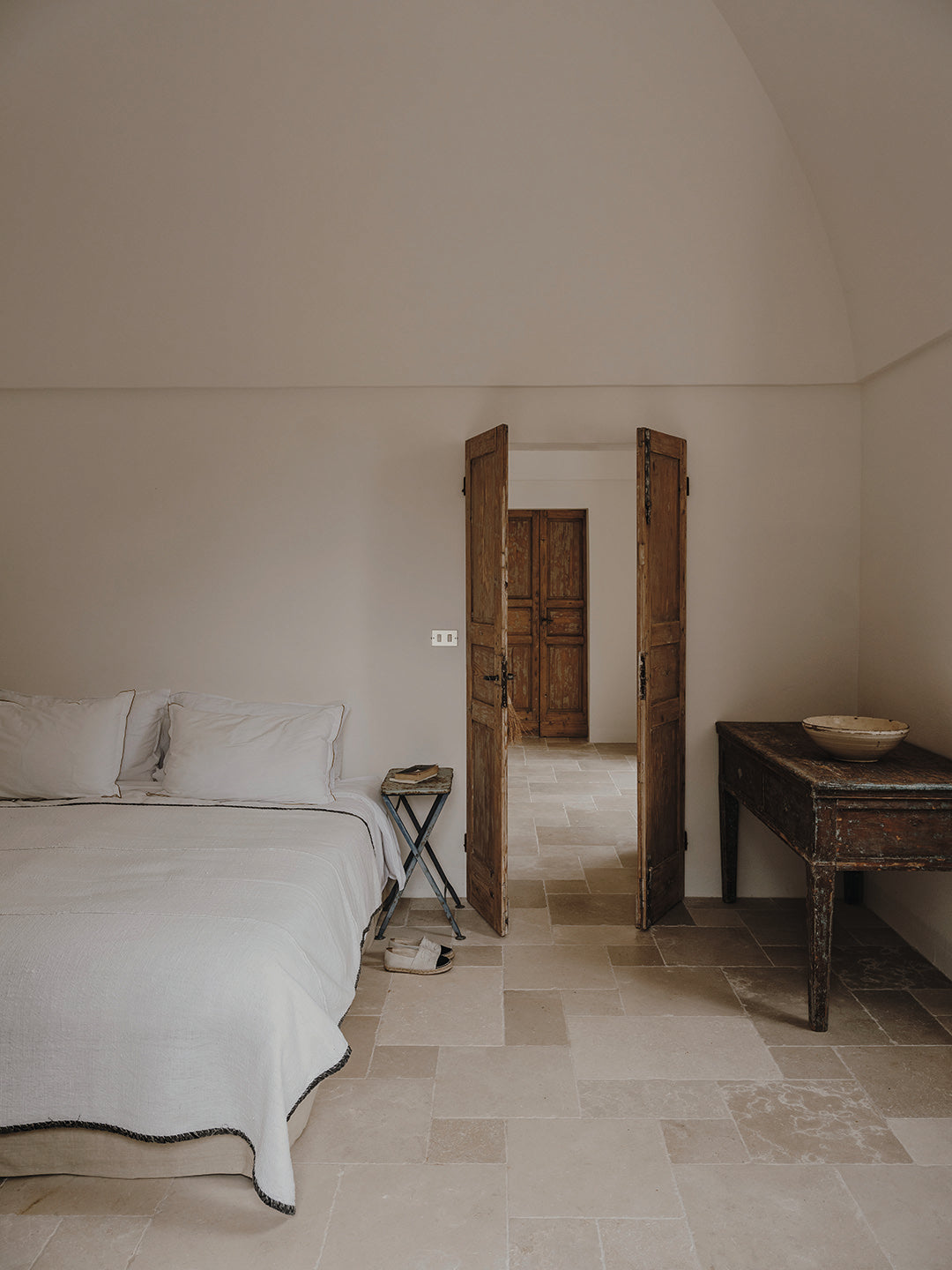
11/2019 architecture & interior visual culture
The Mediterranean has given new impetus to many of the world's defining cultural moments, movements, and societies over the centuries. It has been a source of human feats while also being plagued with tragedy. Associated with good health and a lifestyle best experienced in the piazza, the Mediterranean way of life is enticing. Founder of Openhouse Magazine and architect Andrew Trotter discusses being pulled into its orbit and staying to build a life.

Andrew Trotter spent most of his childhood drawing modern architecture. Although he’d designed more than 200 houses by the age of 18, it wasn’t until the age of 44 that he actually built one. (Photo: Marcelo Marti)
Growing up in the Yorkshire Dales during the 1970s, Trotter recalls it being an era that "wasn't about sharing" or a spirit of openness—which were the principles he later founded the publication around. During a time of rebuilding and conservatism in the United Kingdom, Trotter only began to experience a more candor culture when he moved to Australia in 1990 to study interior design.
The origins of Openhouse was to illustrate through print people passing through, the creation of a community feel, resembling the theme of opening up one's home
In 1994 he returned to Europe, working in London for the likes of Anouska Hemple Designs before drifting into fashion, where he worked with designers Yohji Yamamoto and Michiko Koshin. But the sunshine went away, Australia left a mark on Trotter and the sort of environment he wanted to settle in. The urge for a new challenge was always ajar, so he set sight on the Mediterranean.
Deciding on Barcelona, Trotter's initial business venture was into fashion. Openhouse began in 2010 as a boutique store, then together with his housemate Mari Luz Vidal, they started opening their home as a contemporary photography gallery. Overtime it manifested into a supper club, event space, and eventually a publication. In total 4,500 people passed through their home.

Besides its purpose as a guesthouse, Moroseta is also a functioning olive oil farm. The product is nutty in flavor, Trotter says, and is “good with just about anything.” (Photo: Salva López)
"We started Openhouse out of a small want to do something new. The project started with a need to show Mari Luz Vidal’s photographic work, we made one exhibition, and it worked," Trotter tells us, "I had never thought about having a magazine, and we never started thinking it would become a business. The whole process was very organic."
The foundations of the publication mirrored their surroundings at the time. In The New Mediterranean, he explains the origin of Openhouse was to illustrate through print people passing through, the creation of a community resembling the theme of opening up one's home. He says this spirit of sharing has always existed in Spain and Italy, and that he also experienced it to a degree in Australia.

The kitchen at Villa Castelluccio was entirely redone during the renovation. The bespoke kitchen tops are made from concrete. (Photo: Salva López)
The magazine began in 2014. Creative people from around the world opened up their homes and private places to the public through the publication. We ask him how he'd describe Openhouse, he replied, "It is about community and sharing, meeting people, the passing of knowledge, and ideas."
During this time he was asked to design a new Puglia hotel set in 500-year-old olive growes with historic farmhouses as neighbors. Masseria Moroseta was Trotter's first building, which took four years of planning from 2012 until its completion in 2016. It was a challenging first commission in a country known for expressing strong opinions about design aesthetics and heritage.
"The biggest compliment I get is when people ask, 'Which part is old?' or 'How old was the building when you found it?' Trotter says. "I reply, 'no, it's all new'"
In many ways, Masseria Moroseta mated the ethos of the publication into a physical form. "The idea of an open home, a quiet peaceful place, a place people come and go freely," all these were rooted in his vision. "I like that people come to lunch without it being a special occasion, cooking pasta, and just hanging out. They are doing "nothing much at all.” This is Mediterranean life for me."
Vaulted ceilings, white walls, and stone floors keep the inside cool on even the hottest days, encouraging a communal sense of tranquility away from the courtyard and pool. Modern sensibility informed Masseria Moroseta's design while paying homage to the historic neighboring architecture.

Villa Cardo is one of Trotter's latest commissions and also located in Puglia. It was completed in the spring of 2019. (Photo: Marcelo Martinez)
"The biggest compliment I get is when people ask, 'Which part is old?' or 'How old was the building when you found it?' Trotter says. "I reply, 'no, it's all new.'" Trotter tells us he designs for experiences—for him this is the most important part of the design. "It shouldn't just be something to photograph or beautiful, it is a place to enjoy."
Houses are for living in. “They aren't meant to be a showroom, or a gallery, or just something to photograph,” Trotter explains. Capturing the simplicity of the Mediterranean way of life was at the core of Masseria Moroseta, but this vision wasn't straightforward.
"We think of minimalism as a thing of the 1980s but it was happening a long time ago in southern Europe"
The first proposal was rejected by the council. While it respected the traditional brick format approach known to the region, it was deemed too modern.
"I'm glad they laughed out the first proposal," he tells us. "Instead of doing something architectural, we ended up creating something that was based on the local area. It feels like a building of the past without it being a Disneyland copy, a fake, something that shouldn't be there. A new version of the old building."

The original limestone tiles of Villa Castelluccio were retained but polished to reduce their shine. (Photo: Salva López)
Trotter stripped back to the essentials and looked further into understated design and theories. "We think of minimalism as a thing of the 1980s but it was happening a long time ago in southern Europe."
"Minimalism comes from the past. Centuries ago in Puglia, they used minimal design, small windows, a good brick, and thick stone walls to keep the place cool. You lived simply." This design technique was mastered over centuries of Mediterranean life, it is built to weather the terrain and compliment the ubiquitous ‘bel paese’ (beautiful country).

Villa Castelluccio is a three bedroom and three bathroom home in the Puglia countryside. The interior needed renovating to reduce the 1980s feel in favor of something a little more timeless. (Photo: Salva López)
Masseria Moroseta isn't representative of the bulk of Trotter's work, he says most of his other architectural work consists of designing homes for private clients. But his approach is what makes Masseria Moroseta a notable example of a growing Mediterranean movement. It connects the past to a modern aesthetic peacefully, creating something that pairs an earthy feel with timeless design.
But Masseria Moroseta did inspire new commissions, including Villa Castelluccio in Puglia. The owner was inspired by her stay that she sold her home in Ibiza in order to work with Trotter on modernizing a 1920s farmhouse that was last renovated in the 1980s. At one moment in time, Trotter was working on 11 architecture commissions that came from people who either stayed Masseria Moroseta or saw the space online.
Italia’s culture and way of life have a lasting effect on him, it left him pondering the possibilities of tomorrow and where next after Spain. "I would like to live in Italy, I don't know where yet, but I feel more at home there," he tells us. While Barcelona remains the base of Openhouse, the tranquil and simplistic Italian way of life is something Trotter one day hopes for.
Andrew Trotter was one of the featured profiles from The New Mediterranean which explores this Modernism movement















